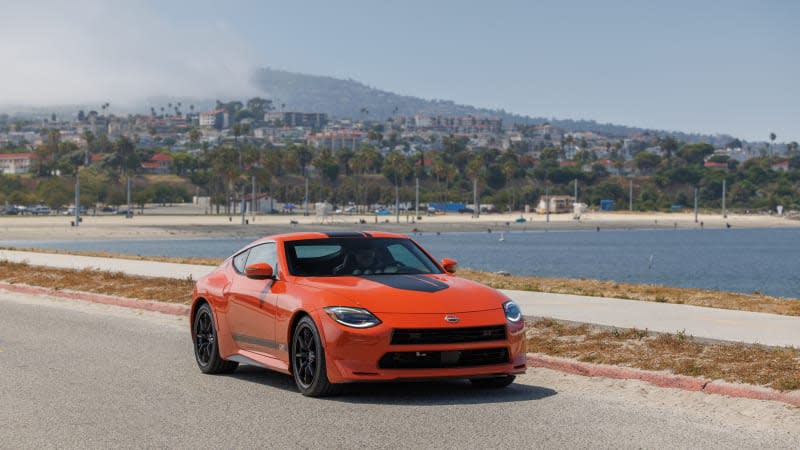2024 Nissan Z Review: Classic looks, classic fun, iffy value
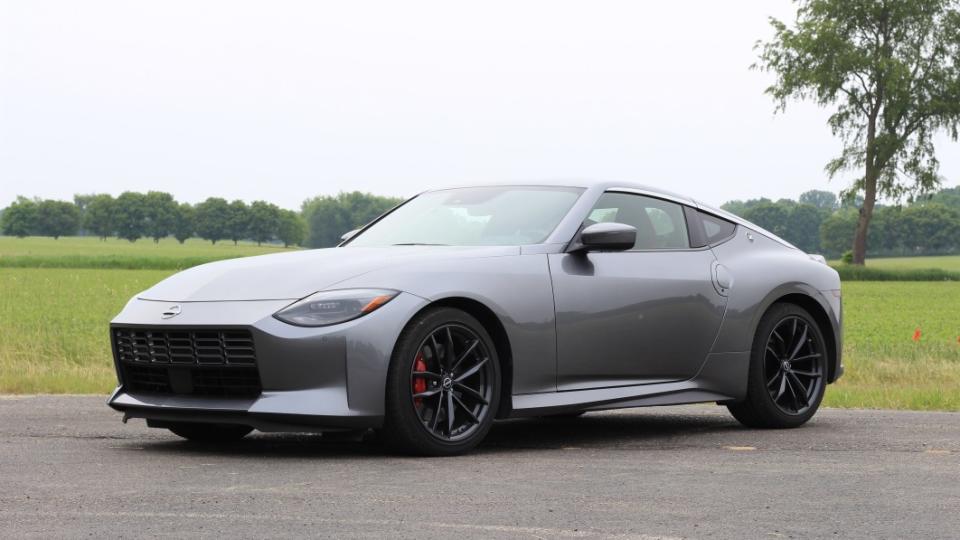
Pros: Strong value; gorgeous styling; good infotainment system; it's a fun-to-drive rear-drive sport coupe; especially excellent Nismo model
Cons: Subpar transmissions; tight interior with only two seats; compromised trunk; Nismo is expensive and auto only
The 2024 Nissan Z is a beautiful and fun rear-wheel-drive sports car with varying degrees of value. On the one hand, the base model offers a rip-snorting twin-turbo V6 and your choice of a manual or automatic for relatively little money. But on the other, you have the new-for-this-year Nismo, which although is the best one to drive, has a price tag that makes it tricky to recommend.
There’s also the slight issue of the Z not quite reaching the highs of some of its competitors. For instance, we’ve found its most direct rival, the Toyota Supra, to be a better sporting machine. And there’s other compelling competition from the Ford Mustang and a handful of sporty BMW two-doors.
Of course, one trick the Z has up its sleeve is its styling. It’s a highlight reel of some of the best cues from all of Z history, from the 240Z-inspired nose to the Z32 300ZX-inspired tail (and it gets even more referential with the new-for-2024 Heritage Edition). There’s not a bad angle on it, even when you can spot where the old 370Z kind of sticks out. And the interior features quite attractive and easy-to-use technology incorporated in an equally attractive retro-inspired cockpit. So, the Z may not be a class leader, but there’s plenty of charm to keep it under consideration.
Interior & Technology | Passenger & Cargo Space | Performance & Fuel Economy
What it's like to drive | Pricing & Trim Levels | Crash Ratings & Safety Features
What's new for 2024?
There are two new additions to the Z lineup for 2024. The first, and most significant, is the Z Nismo. We go over it in-depth in our Nissan Z Nismo first drive review, but in short, it brings additional power and torque, upgraded suspension and brakes over the Z’s Performance trim, and unique exterior and interior treatments. It’s strangely only available with an automatic transmission, and it’s far and away the most expensive trim level.
The second new addition, which arrived rather late in the model year, is the 2024 Nissan Z Heritage Edition. Pictured above, it pays homage to the S30-generation Datsun 240Z in design and sits between the Z Performance and Z Nismo in the model hierarchy. Mechanically identical to the Performance with a choice of manual and automatic transmissions, it is effectively an extensive appearance package. It gets a reworked front fascia with more pronounced rectangular intakes and black graphics, plus broader fenders cover 19-inch wheels. There are stripes running down the hood, roof, and trunk lid, as well as black-out badges and Heritage Edition decals.

What are the Nissan Z interior and in-car technology like?
The Nissan Z interior is a great blend of modern technology and retro looks. Like past Z models, the center stack is canted toward the driver, as are the three dash-top analog gauges. Soft touch plastics are used across most of it, and the design really pops with some of the two-tone color options. There are some less-than-premium materials on items such as door handles, however, and in general, the Supra interior is the higher quality environment – which at least partially explains the price difference between them. For the Z's price, though, the cabin's look and quality are appropriate.
Perhaps the biggest advancement from one Z generation to the next are the big, vivid and easy-to-read screens. The instrument screen can be configured with different graphics and information to fit your preferences. It can even show an impressive amount of information about the Z's mechanical bits. In addition to the basics such as speed, revs, fuel and coolant temperature, it has readouts for engine oil temperature, and pressure and differential oil temperature. Coupled with the analog turbo boost pressure, turbo rpm and voltage gauges atop the dash, you'll be constantly aware of what's going on under the hood. The infotainment system is also user-friendly and responsive, and incorporates Apple CarPlay and Android Auto. On the Performance, Heritage Edition and Z, those phone mirroring systems are wireless.
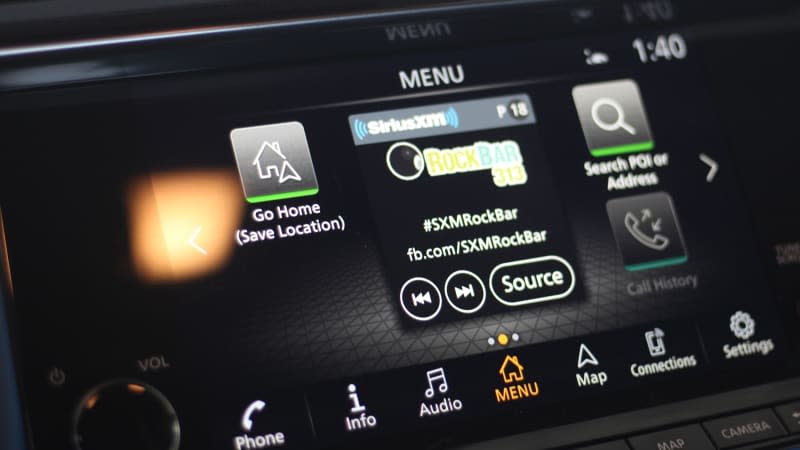

How big is the Z?
The Z is a bit smaller than the Ford Mustang, and it's nearly the same size as its closest competitor, the Toyota Supra. Its exterior dimensions are only off by a few tenths in many measurements. The Z does weigh a bit more than the Supra, though. At the lightest, the Z weighs 3,486 pounds, and 3,602 pounds at the heaviest. The six-cylinder Supra 3.0 weighs in at 3,400 pounds. The much less powerful four-cylinder Supra 2.0 is even lighter at 3,181 pounds.
By the numbers, the Z and the Supra's interior measurements are nearly identical, too. In reality, though, the Z feels much tighter than the Supra. The higher seating position makes headroom tighter, and the cabin feels narrower. This may be exacerbated by the slightly narrow seats with strong bolsters that aren't the friendliest to bigger body types. It should also be noted that its two-seat interior won't be for everyone – the back seats of a Mustang, BMW 2 Series or Toyota 86/Subaru BRZ may hardly be adult friendly, but for extra storage or canine transport, they can make a big difference.
As for cargo space, Nissan hasn't given official numbers, but Car and Driver reports it has 7 cubic feet. That's smaller than the Supra's 10.2 cubic feet. The Z's cargo area is also oddly shaped, as it's shallow and wide. There's also an awful lot of car to clear when lifting things up and into the trunk.
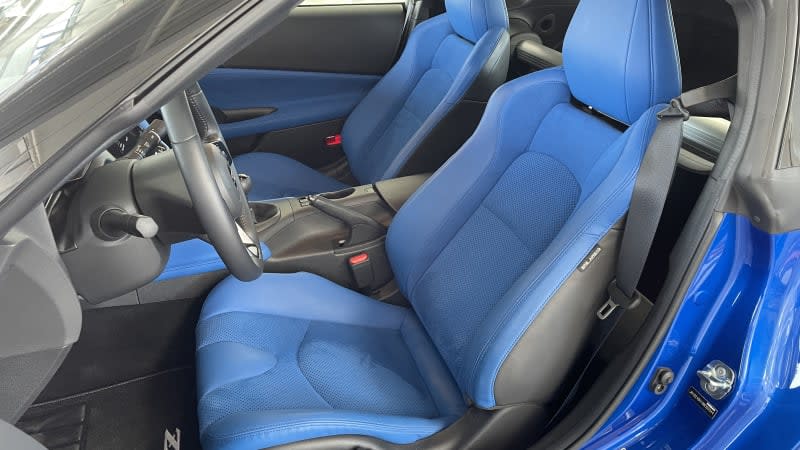
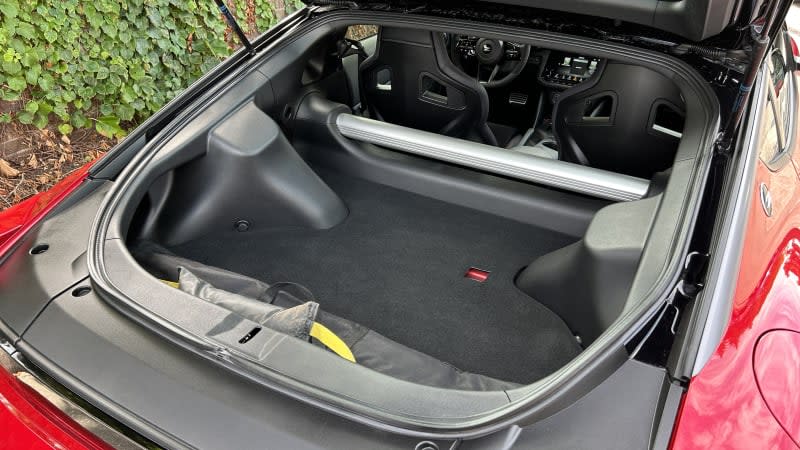

 Yahoo Autos
Yahoo Autos 